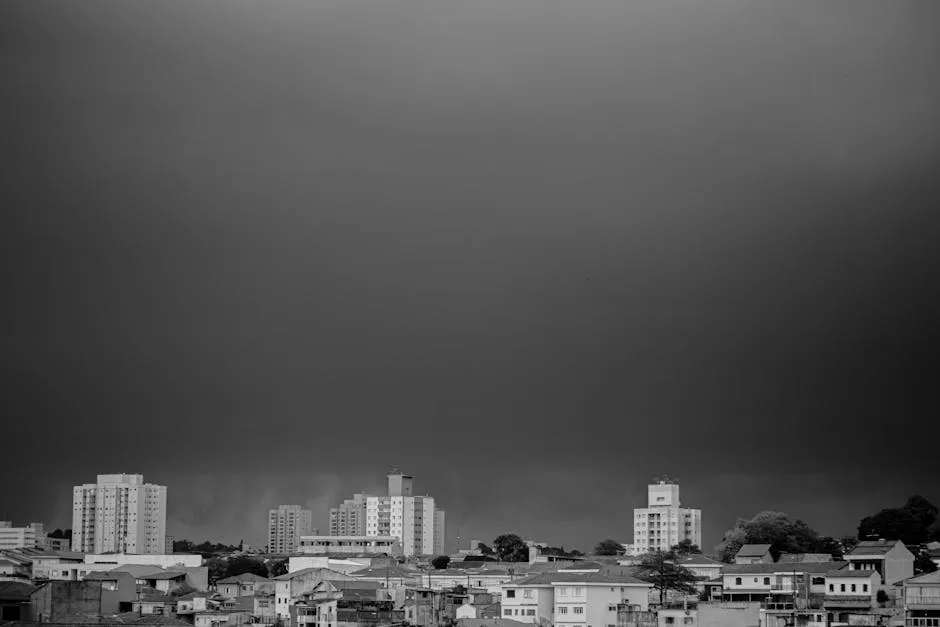Introduction
Aurora, Illinois, is the second-largest city in the state, with a population of approximately 177,866 residents. Nestled along the Fox River, this vibrant city boasts a mix of urban and suburban charm. With its rich history and cultural diversity, Aurora is a significant part of the Chicago metropolitan area.
Understanding crime statistics is crucial for potential residents, businesses, and tourists. After all, who wants to step into a new neighborhood blindfolded? Knowledge of local crime rates helps individuals make informed decisions about where to live, work, or visit.
This article aims to provide a thorough analysis of crime statistics in Aurora. We’ll highlight trends, comparisons, and safety evaluations. By the end, you’ll have a clearer picture of what’s happening in this thriving city.
Overview of Crime in Aurora
General Crime Statistics
Aurora’s crime landscape is shaped by various factors, and recent statistics reveal a mixed bag. According to NeighborhoodScout, the city reported a total of 900 crimes, which includes 421 violent crimes and 479 property crimes. This equates to a crime rate of 5.06 per 1,000 residents. Notably, the chance of becoming a victim in Aurora stands at one in 198, a stark contrast to the national average of one in 43.
In terms of safety, Aurora is safer than 74% of cities in America. It also ranks better than 60% of communities in Illinois. However, don’t let that fool you. While the overall crime rate might seem manageable, violent crime rates are higher than the state average, warranting a closer look.
When comparing Aurora’s crime rates to the state averages, the following insights emerge: the chance of becoming a victim of violent crime in Aurora is one in 422, while in Illinois, it is one in 348. For property crime, residents face a risk of one in 371, compared to one in 59 statewide. These statistics underline the importance of viewing the broader picture when evaluating safety.
For a gripping exploration of the darker side of human nature, you might want to check out Crime and Punishment by Fyodor Dostoevsky. This classic novel delves deep into the psychological motivations behind crime, making it a must-read for anyone interested in the intricacies of human behavior.
A brief glance at historical data indicates fluctuations in crime rates over the years. While some categories have seen declines, others have sparked concern. This analysis will dive deeper into those trends, offering a comprehensive overview of crime in Aurora.
Understanding these statistics can empower residents and visitors alike to make better decisions in terms of safety, community engagement, and overall quality of life in Aurora. The more informed you are, the better you can navigate this bustling city.

Historical Crime Trends
Aurora, Illinois, has experienced notable fluctuations in crime rates from 2010 to 2022. Data from sources like Macrotrends and AreaVibes reveal that violent crimes, including murder and assault, peaked in 2016 before gradually declining. For instance, the violent crime rate was 320.41 per 100,000 residents in 2011, then decreased to 258.43 by 2017.
However, the trend shifted again with a rise to 267.18 per 100,000 in 2018. This increase might raise eyebrows, but looking at the bigger picture, the overall crime rate has shown some improvement. Reports indicate that while violent crimes have fluctuated, property crimes have consistently decreased, leading to safer neighborhoods over the years.
For those intrigued by the complexities of crime investigation, consider reading Mindhunter: Inside the FBI’s Elite Serial Crime Unit by John E. Douglas. It offers a fascinating look into the minds of serial killers and the methods used to catch them, providing insight into the darker aspects of society that affect us all.
From 2020 to 2022, Aurora’s crime rate stabilized, with property crimes notably dropping to 2.69 per 1,000 residents. This trend suggests that community initiatives and increased police presence are making a difference. Overall, while certain years brought spikes in specific crime types, the long-term trend points toward improvement and a growing focus on safety within the community.

Crime Analytics
Breakdown of Violent Crimes
Violent crimes encompass offenses that inflict or threaten physical harm. In Aurora, the breakdown includes murder, assault, robbery, and rape. In recent years, Aurora reported 421 violent crimes, translating to a rate of 2.37 per 1,000 residents.
Comparatively, the Illinois state average for violent crimes stands at 2.52 per 1,000 residents, indicating that Aurora’s rate is slightly lower than the state average. However, while Aurora’s murder rate remains relatively low, assaults account for a significant portion of violent crime.
For instance, the national average for murder is 6.1 per 100,000, while Aurora’s rate hovers around 5.6. When it comes to robbery, Aurora’s figures are considerably lower than the national average, which is 135.5 per 100,000 residents. The statistics show that, while crime exists, Aurora is performing better in some violent crime categories compared to national figures.

Breakdown of Property Crimes
Property crimes involve the theft of property or damage to it. In Aurora, this category includes burglary, theft, and motor vehicle theft. The city recorded 479 property crimes, resulting in a rate of 2.69 per 1,000 residents.
When compared to state and national averages, Aurora’s property crime rate is significantly lower. For example, the national average for property crime is about 2,042.8 per 100,000 residents. In Illinois, the average is 2,478 per 100,000. Thus, Aurora residents enjoy a relatively low risk of falling victim to property crimes.
If you’re interested in the fascinating world of true crime, you can explore more with True Crime: The Best True Crime Stories. This collection offers a gripping look at some of the most notorious cases throughout history, perfect for those who enjoy a good mystery.
Burglary rates are particularly telling. Aurora’s burglary rate is notably lower than the national average of 500.1 per 100,000, highlighting the effectiveness of local law enforcement efforts. The statistics suggest that while property crimes occur, the rate is manageable compared to larger urban areas, reinforcing the community’s ongoing commitment to maintaining safety and security.

Crime Rate Comparisons
When it comes to safety, comparing Aurora’s crime rates with similar cities in Illinois provides valuable insights. Let’s stack Aurora up against Naperville and Rockford, two cities that offer contrasting safety dynamics.
| City | Population | Violent Crime Rate (per 1,000) | Property Crime Rate (per 1,000) |
|---|---|---|---|
| Aurora | 177,866 | 2.37 | 2.69 |
| Naperville | 148,000 | 0.68 | 1.93 |
| Rockford | 146,000 | 6.69 | 3.38 |
From this table, it’s clear that Naperville boasts a significantly lower violent crime rate, making it one of the safest cities. In contrast, Rockford’s numbers are concerning, especially with a violent crime rate of 6.69 per 1,000 residents. Aurora sits in the middle, showing that while it’s safer than Rockford, there’s room for improvement when compared to Naperville.

Neighborhood Safety Analysis
Safest Neighborhoods in Aurora
Aurora is home to several neighborhoods that shine in terms of safety. If you’re hunting for a peaceful place to call home, consider these options:
- Eola: This neighborhood is celebrated for its community spirit. Residents here actively engage in local events, fostering a tight-knit environment.
- Stonebridge: Known for its well-maintained parks, Stonebridge emphasizes outdoor activities. The police presence is strong, ensuring a safe atmosphere for families.
- Homestead: With a mix of single-family homes and vibrant community programs, Homestead promotes safety through neighborhood watches and active resident involvement.

High-Crime Areas
Not all neighborhoods in Aurora share the same level of safety. Some areas struggle with higher crime rates, presenting challenges for residents.
- Downtown Aurora: This area, while bustling with activity, faces issues related to property crime. The mix of nightlife and foot traffic can lead to opportunistic thefts.
- Near East Side: Residents report higher instances of violent crime, primarily driven by gang activity. Community efforts are underway to combat these challenges, including increased patrols and youth engagement programs.
These high-crime areas face specific hurdles. However, local authorities and community leaders are committed to enhancing safety through various initiatives. Increased police presence and community outreach programs are vital steps toward improvement.
In conclusion, while Aurora has its share of safe havens, it’s essential to stay informed about the neighborhoods that require extra caution. Understanding the dynamics of each area allows residents and prospective movers to make informed decisions.

Community and Law Enforcement Efforts
Role of the Aurora Police Department
The Aurora Police Department (APD) is on a mission to foster transparency and build trust within the community. Their Online Transparency and Accountability Portal is a shining example of this commitment. This portal offers residents access to updated data regarding crime statistics, police activities, and community demographics. It’s like having a front-row seat to the inner workings of law enforcement—without the popcorn!
Understanding local crime rates is crucial. The APD’s initiative reflects an understanding that an informed community is a safer community. Interim Police Chief Heather Morris stated, “The Aurora Police Department’s Online Transparency and Accountability Portal represents our commitment to broader information sharing with the community we serve.” This kind of openness invites engagement and encourages residents to actively participate in local safety dialogues.
Moreover, the APD emphasizes community policing. Officers build relationships with residents, creating a bond that goes beyond the badge. This approach isn’t just about enforcement; it’s about collaboration. Officers participate in local events, attend neighborhood meetings, and foster partnerships with various organizations. The results? Crime rates have shown a positive trend. Community policing helps demystify law enforcement and creates a sense of security among residents. After all, when you know your neighbor is a friendly officer, it’s easier to feel at home.

Community Safety Programs
Aurora’s commitment to safety extends beyond the police department. The city boasts a range of community safety programs aimed at crime prevention and enhancing security. One of the most effective initiatives is the neighborhood watch program. Residents band together to keep an eye on their surroundings, reporting suspicious activities while sipping their morning coffee. It’s a win-win: neighbors get to know each other, and crime rates benefit from the extra set of eyes.
Youth engagement programs also play a vital role. Local organizations work with schools to provide mentorship and activities for young people. By investing in the youth, Aurora is paving the way for a safer future. When kids are involved in constructive activities, they’re less likely to stray into trouble. Programs like these offer a sense of belonging and purpose, which are essential for reducing crime rates.
Let’s not forget the role of community events. Aurora hosts various functions throughout the year, from safety fairs to fun runs, where families can gather and connect. These gatherings promote unity and strengthen the fabric of the community, making it harder for crime to take root. Residents who feel connected are more likely to look out for one another.
In summary, the Aurora Police Department and the community work hand in hand to create a safer environment. Through transparency, community policing, and proactive safety programs, they are making strides in reducing crime and fostering a sense of belonging. After all, it takes a village—or in this case, a city—to raise a safe community!

Methodology of Crime Data Collection
In Aurora, crime data collection follows a systematic approach, ensuring accuracy and transparency. Local law enforcement agencies play a pivotal role in this process. They gather crime reports, which are then submitted to the Federal Bureau of Investigation (FBI) as part of the Uniform Crime Reporting (UCR) program. The UCR program collects data from over 18,000 law enforcement agencies across the United States, providing a comprehensive view of crime trends nationally.
The FBI’s UCR program categorizes crimes into violent and property offenses. Violent crimes include murder, rape, robbery, and aggravated assault. Property crimes encompass burglary, larceny-theft, motor vehicle theft, and arson. This categorization helps in analyzing specific crime trends and patterns in Aurora.
However, relying solely on UCR data has its limitations. First, not all crimes are reported to the police. Victims may choose not to report incidents for various reasons, including fear or feeling that the police cannot help. This can lead to underreporting, skewing the statistics. Additionally, the UCR does not capture all crime types, such as white-collar crimes and cybercrimes, which are becoming increasingly prevalent.
Therefore, it’s crucial to utilize multiple sources for a well-rounded analysis of crime in Aurora. Other platforms, like NeighborhoodScout and AreaVibes, provide additional insights by analyzing demographic data and local trends. These sources can highlight shifts in crime rates that may not be fully represented in UCR data alone.
Combining data from various sources allows for a more comprehensive understanding of the safety landscape in Aurora. This multi-faceted approach helps residents and potential newcomers make informed decisions based on a broader set of information. In the end, a well-rounded perspective on crime statistics is key to fostering community safety and awareness.

Conclusion
In summary, Aurora, Illinois, presents a mixed bag when it comes to crime statistics. Overall, the city is safer than 74% of communities in America, with a crime rate of 5.06 per 1,000 residents. While this sounds encouraging, it is essential to recognize that violent crime rates exceed state averages, indicating areas for improvement.
The crime data shows that while property crimes have seen a decline, violent offenses fluctuate and require ongoing attention. Aurora’s community safety programs and the proactive stance of the Aurora Police Department are noteworthy. These initiatives aim to enhance public safety and build trust within the community, making strides toward reducing crime.
For residents and visitors, informed decision-making is vital. Knowledge about specific neighborhoods, their safety levels, and ongoing community efforts can empower individuals to navigate Aurora with confidence. Staying updated with local crime statistics can help foster a safer environment while encouraging community engagement.
If you’re intrigued by the psychological aspects of crime, you might enjoy The Psychopath Test: A Journey Through the Madness Industry by Jon Ronson. This book provides a compelling look at the nature of psychopathy and its implications for society, perfect for those curious about mental health and crime.
As crime trends evolve, so should the community’s response. A vigilant and informed public can significantly impact safety. By actively participating in community programs and staying aware of crime statistics, residents can contribute to making Aurora an even safer place to live and visit.

Understanding crime statistics is essential for residents and visitors alike. For a more detailed look at crime trends specifically in Fremont, check out the fremont crime statistics.
FAQs
Is Aurora, Illinois a safe place to live?
Based on recent crime statistics, Aurora is considered relatively safe. The overall crime rate is lower than the national average, making it safer than 74% of cities in the U.S. However, the city does experience higher rates of violent crime compared to state averages. While many neighborhoods are safe, it’s advisable to research specific areas before deciding to move.
What are the most common crimes in Aurora?
The most common violent crimes in Aurora include assault, robbery, and occasional homicides. Property crimes primarily involve theft, burglary, and motor vehicle theft. Understanding these trends can help residents stay vigilant and informed about their surroundings.
How does Aurora compare to other cities in Illinois?
When compared to similar cities, Aurora’s crime rates reveal a mixed picture. For instance, Naperville boasts significantly lower violent crime rates, while Rockford struggles with higher rates. Aurora sits in the middle, being safer than Rockford but with room for improvement compared to Naperville.
What resources are available for crime prevention in Aurora?
Aurora offers various resources for crime prevention. The Aurora Police Department provides community engagement programs and safety initiatives, such as neighborhood watch groups. Additionally, local organizations focus on youth engagement and mentorship, promoting a safer community through active involvement. Residents can also access crime data through the Police Department’s Online Transparency and Accountability Portal.
Please let us know what you think about our content by leaving a comment down below!
Thank you for reading till here 🙂
All images from Pexels




